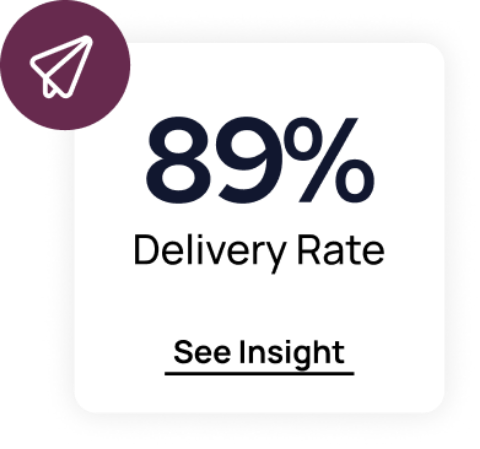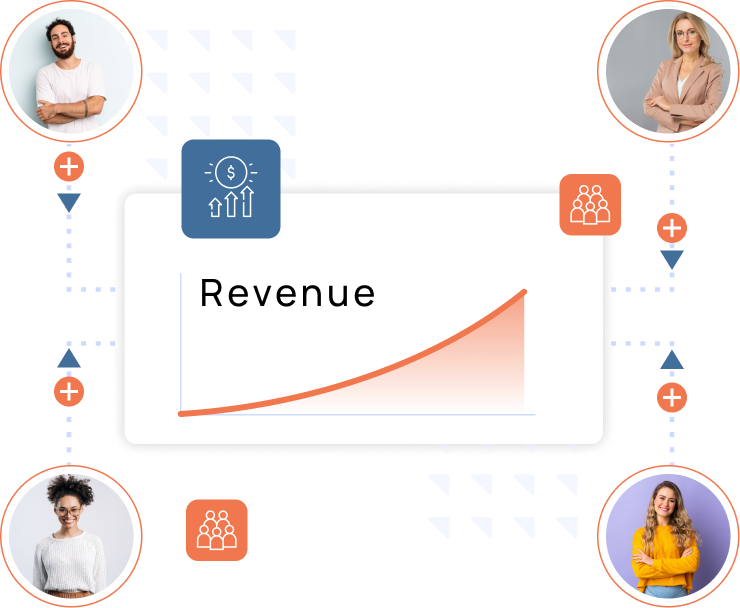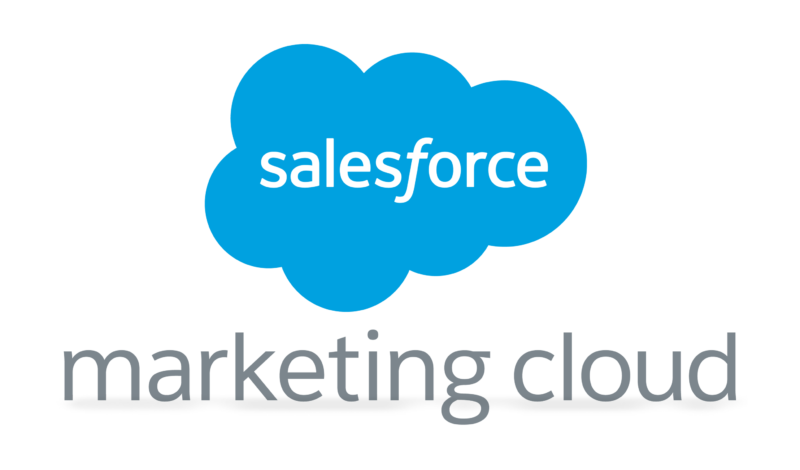
Radically Increase
Email Engagement
Email marketing is the top revenue-driving marketing channel, and email engagement is the most important KPI of email marketing. AudiencePoint’s Email Engagement Optimization solution provides game-changing insight that lets you reach your unengaged subscribers while they are active in their inboxes.
Reach your subscribers when they’re in their inbox
Our second party data pool identifies when your unengaged subscribers are active in their inboxes so you can deliver your most important messages when you know that subscriber is most likely to engage.


Improve Email Deliverability
Re-engage your dormant subscribers by sending emails when they are in their inbox ready to engage. AudiencePoint’s Email Engagement Solution means the days of sending risky emails to subscribers who will never re-engage are over. We help you target subscribers who may appear dormant on your list but are still active in their inbox.
Personalize to your best subscribers and drive revenue
We provide personalized insights about your best subscribers, helping you deliver the right email with the right message at the right time. Our insights boost engagement, drive more revenue, and ultimately turning your best subscribers into evangelists.

Are you ready to increase your email engagement?

Second Party Data Pool
Our second party data pool powers insights that help you to understand the quality of each of your email subscribers. Instead of relying just on your own first party data, our second party data pool shows you how your recipients engage with their inbox. You will see which of your subscribers engage with others but not you, and who is not engaged with their inbox at all.

Choose What’s Right for Your Business
What Our Customers Say
“We suppressed the dormant Gmail addresses and saw a dramatic improvement in our Inbox placement! Our team is glad to have made an impact with your tool – so thank you!”
– Email Marketing Manager at a major insurance provider
CEO “LOREM”
“We are pleased with how AudiencePoint has approached privacy for our customers, and we believe their approach is compliant with GDPR, CCPA, and is also positioned to comply with future privacy regulations.”
Founder and President of a leading digital marketing agency
CEO “LOREM”
“AudiencePoint helped us identify our lapsed subscribers that were still mailable. Because of their data, we were able to increase the number of reactivated subscribers across all of our enterprise brands.”
Director of Email Marketing at a national e-commerce brand
CEO “LOREM”
Partners
Our pre-built integrations and API make it easy to connect to your ESP so you can begin building engagement and driving revenue quickly.






Are you ready to increase your email engagement?
A Guide to Email Engagement
Sending consistent marketing emails to a list of email subscribers is an excellent idea. Marketing emails provide frequent updates to customers about company news, new products, and upcoming sales or deals. In addition, regularly sending email newsletters will keep your brand name at the top of prospective customer’s minds when they need to make a purchase.
While sending marketing emails is beneficial, you also must ensure that your emails are engaging. Otherwise, they will not have an impact on your potential customers. To optimize for engagement, you must have an effective strategy. Good engagement strategies lead to:
- Creating a connection with customers
- Higher click-through rates
- Higher email open rates
- Increased consumer perception of your brand
- Loyal customers
- More sales and higher lifetime value (LTV)
This article will outline everything you need to know about the importance of sending engaging emails and how you can create a strategy to increase email engagement. Keep reading to learn more.
What Is Email Engagement
Email engagement measures how your email subscribers respond to your emails. Email marketing engagement is measured through email analytics and tracking key metrics.
What Is Email Engagement?
Email engagement measures how your email subscribers respond to your emails. Email marketing engagement is measured through email analytics and tracking key metrics. Making your marketing emails more engaging will increase the satisfaction of your email subscribers. If subscribers enjoy your emails, they are more likely to make a purchase.
What Is an Email Engagement Strategy?
An email marketing customer engagement strategy will help you get the most out of your marketing campaign. Creating a strategy to increase engagement involves:
- Setting goals for the results you want to achieve.
- Researching your target market.
- Planning the frequency and timing of your emails.
- Writing engaging emails that generate interest.
- Tracking key performance metrics.
- Optimizing as you go.
By following these steps, you will be on your way to creating an effective email campaign that is highly engaging.
How to Create Goals to Increase Email Engagement
The first step when creating an email engagement strategy is to set goals you want to achieve. You should set up long-term and short-term goals. These goals will provide you with milestones to hit along the way and keep you on track towards a successful marketing campaign.
One of the best goal-setting strategies for an email campaign is setting SMART goals. SMART is an acronym for:
- Specific: When setting goals for your email campaign, you want to ensure they are specific and detailed. Specific goals help ensure optimal results.
- Measurable: Your goals should also be measurable. You should be able to easily keep track of your progress along the way and know when you’ve completed key milestones.
- Attainable: It’s good to push yourself to do your best. But you should ensure that your goals are attainable within the scope of your company and the time you have available.
- Relevant: Make sure that your goals are relevant. They should align with your brand and ultimately increase ROI
- Time-bound: To keep yourself on track, make goals time-bound. This helps you to continue making consistent progress. It also helps you know when the next step must be completed.
An example of a SMART goal for email engagement is “to increase email open rates by 10 percent in the next 60 days.” This is a good SMART goal since it is:
- Specific in what needs to be achieved.
- Measurable, since email open rate is a metric that can be tracked.
- Attainable, since many companies can increase their open rate by 10 percent by making some key changes.
- Relevant to increasing email engagement.
- Time-bound (there are 60 days to complete the goal.)
Now that you know how to create SMART goals for your marketing campaign, you will be able to begin taking action and completing goals to increase your company’s success through email marketing. Here are three ways to create a successful email marketing campaign.
1) Research Your Target Market to Write Engaging Emails
When creating emails, it’s essential to know and understand what will be engaging for your target audience. Your target market is your ideal customer, which includes demographics, geographic location, and psychographics (their attitudes and aspirations).
Before creating an email marketing campaign, you should write down all the details about who your ideal customer would be. For instance, a bodybuilding gym that is starting an email marketing campaign may decide on the following target market:
- Demographic: Men and women between the ages of 18-35 with an annual income between $40,000 and $80,000.
- Geographic: People who live in the Dallas, Texas area.
- Psychographic: People who want to build muscle and strength and get in better shape.
Once you understand your target audience, you can begin writing more engaging emails by considering your ideal customer’s wants and needs. In this instance, you could write emails about how signing up for a gym membership will help your ideal audience build muscle and get in the best shape of their lives. You could also provide valuable tips and tricks to help your email subscribers improve their workout routines. These types of emails would likely engage your ideal customers and get them interested in your company.
2) Optimize Frequency and Timing of Emails for Engagement
One of the best things you can do to boost email engagement is to optimize the frequency and timing of your emails. When sending marketing emails, you may wonder if you’re sending emails too frequently or not enough. Email marketing software, such as AudiencePoint’s email marketing tools, can help you find the right frequency and timing of emails. This can help lead to high open rates.
AudiencePoint’s software provides you with relevant and timely metrics. These metrics allow you to optimize your email campaign for the timing and frequency that your audience responds to the best. Knowing what time your email subscribers are most likely to see your emails and click on them will help you send your emails at the exact right time. You can also test different frequencies of emails to know how many emails you should send per week.
3) Write Engaging Email Content
Getting people to click on your email is great, but it doesn’t help much if your email content doesn’t keep their interest and influence them to take action. The best way to write engaging email content is to:
- Speak directly to your audience and address their needs
- Break up your text into short paragraphs.
- Use images that add to your message.
- Write with passion for what your product or service can provide.
- Provide valuable information.
- Provide a clear call to action.
All of these tips will make your emails more engaging. When email subscribers have a good experience reading your emails, they will be much more likely to click on future emails from your company. Over time, this leads to higher email views, open rates, and engagement rates.
What Are Email Engagement Metrics?
When sending marketing emails, it’s important to pay attention to key performance indicators (KPIs). KPIs help you understand how your emails perform. This helps you track your improvement as you work towards your goals. Key email KPI metrics that you should track are:
- Bounce rate
- Click-through rate
- Click-to-open rate
- Conversions
- Inbox Placement Rate
- Open rate
- Spam complaints
- Unsubscribe rate
Email analytics tools like AudiencePoint’s email marketing software will help you track key email KPIs, so you can continue improving your email engagement and email re engagement campaigns.
Let’s dig a little deeper into these KPIs and what they mean.
Bounce Rate
The email bounce rate is the percentage of emails that couldn’t be delivered to the recipient. If you have too high of a bounce rate, it’s an indicator that your emails are being marked as spam or are being sent to invalid email addresses. Email inbox providers and anti-spam networks monitor the bounce rates of email campaigns, so it’s important to ensure that your bounce rate stays low to avoid having future emails blocked by these safety networks.
There are methods you can implement to avoid a high bounce rate. If you’re getting email bounces due to invalid email addresses, you must remove those emails from your list as soon as possible. Using a double opt-in when having someone sign up for your email list or verifying email addresses during sign-up is also a good way to avoid email bounces.
What Is an Acceptable Email Bounce Rate?
According to research done by Campaign Monitor, an acceptable email bounce rate is anything under 2%. If your email bounce rate is between 2-5%, it is worth noting and working to lower it. A bounce rate higher than 5% is concerning, and you should work immediately to reduce your email bounce rate.
Click-To-Open Rate
The click-to-open rate is similar to the click-through rate because it tracks how many people clicked on a link within an email. However, the main difference between the two is that the click-to-open rate tracks the percentage of link clicks from only people who opened the email. The click-to-open rate is often a better metric for determining how well the ad copy, design, and call to action of the email keep readers engaged.
Conversions
The conversion rate is the most important key performance indicator for emails. The conversion rate is the percentage of people who took the desired action, which was the purpose of sending the email. While conversions are usually tracked in sales and dollars, you could track many other types of conversions in email marketing. Different types of conversions are:
- Downloading a piece of content.
- Registering for a demo.
- Registration for an event.
- Signing up for a subscription.
Whatever the primary goal of the email was, a high conversion rate demonstrates success for an email marketing campaign.
When marketing emails are sent, there is a chance they could end up in someone’s junk folder. An email ending up in someone’s junk folder can be accidental or intentional. But either way, it will likely lead to them not seeing your email. This is where the inbox placement rate is important. The inbox placement rate is the percentage of emails that end up in a recipient’s inbox.
Having a high inbox placement rate is essential to ensure your readers are not marking your emails as spam or that they are not automatically being detected as spam. If you see a dip in your inbox placement rate, you should investigate it as soon as possible to ensure that you solve the problem quickly. Using a double opt-in during sign-up for your email list can also help ensure that your emails don’t get marked as spam by recipients.
Inbox Placement Rate
Open Rate
The email open rate is another key metric for marketing emails. It helps determine the effectiveness of your headlines and how receptive email subscribers are to receiving emails from your company. Marketing emails are only effective if people decide to open them and read them, so this is a key engagement metric to track and strive to improve.
What Is a Good Email Open Rate?
According to Mailchimp, the average email open rate in 2022 across all industries is 21.33%. A good email open rate is one that meets or exceeds the average. However, the average email open rate can vary by industry, so it is important to pay attention to industry standards for this metric.
What Are Average Email Open Rates by Industry?
The average email open rates by industry are:
- Business services: 20%
- Computer and electronics: 19%
- Education: 25%
- Financial services: 23%
- Health, pharmaceuticals, and biotech: 21%
- Manufacturing: 23%
- Media and entertainment: 21%
- Real estate and construction: 26%
- Retail: 23%
- Software and internet: 20%
- Telecommunications: 21%
Spam Complaints
Another important email metric to track is spam complaints. Spam complaints are the percentage of people who received your email and reported it as spam or moved it to their junk folder. Too many spam complaints can adversely affect your future email campaigns, as your company emails may be more likely to go to someone’s spam folder automatically or be blocked by the email inbox provider altogether.
Unsubscribe Rate
The unsubscribe rate is another key email metric to track. The unsubscribe rate is the percentage of people who hit the unsubscribe link upon receiving an email from your company. Too many unsubscribes show that people aren’t happy with your emails or are receiving them when they don’t want them.
Optimize for Email Engagement as You Go Based on Your KPIs
Email engagement is a constant work in progress, and you can always strive to improve key email marketing metrics. Every time you send an email campaign, look to see what you’re doing well and which areas could use improvement. Doing things like A/B testing, where you compare two different wordings or designs, can help you refine your emails for further success. AudiencePoint’s email marketing software can help you with this. It will continuously track key engagement metrics for you and let you know what areas you can improve upon.
5 Ways to Increase Email Engagement
There are some email engagement best practices you can follow to encourage your recipients to interact with your emails. Common best practices for email engagement are:
1) Don’t neglect the preview text: The preview text is the snippet of text that follows the subject line. This is important, since many email subscribers will read preview text while deciding if they want to click your email.
2) Make emails mobile-friendly: Many people check their emails on their phone, so you must make your emails mobile responsive. If emails don’t load well or don’t fit the screen properly, there is a very high chance viewers will delete them immediately.
3) Make transactional emails a good experience: Transactional emails that send a receipt after someone makes a purchase have one of the highest open rates of all emails. Put extra effort into your transactional emails to make them a good user experience.
4) Personalize your emails when possible: Adding personalization to your headline or email copy can lead to higher email click rates and better engagement. Even something as simple as including the recipient’s first name in the email subject line can go a long way toward using the power of personalization.
5) Send a welcome email: According to HubSpot, 76% of people expect a welcome email immediately after subscribing to your list. A welcome email helps ensure people that they are now subscribed and sets a good tone for future emails.
If you follow these best practices for email engagement, you will be on your way to creating a more successful email marketing campaign.
AudiencePoint Can Help With Understanding Email Engagement
Making your emails more engaging is crucial to getting the most out of your email marketing campaign. It’s important to provide value in your emails and optimize them appropriately to get a viewer’s attention and have them take the intended action. If you follow the tips in this article, you will be on your way to creating more successful marketing emails that are a great experience for your email subscribers.
If you’re ready to take your email marketing campaigns to the next level, Contact AudiencePoint to learn more about our email insight software today!